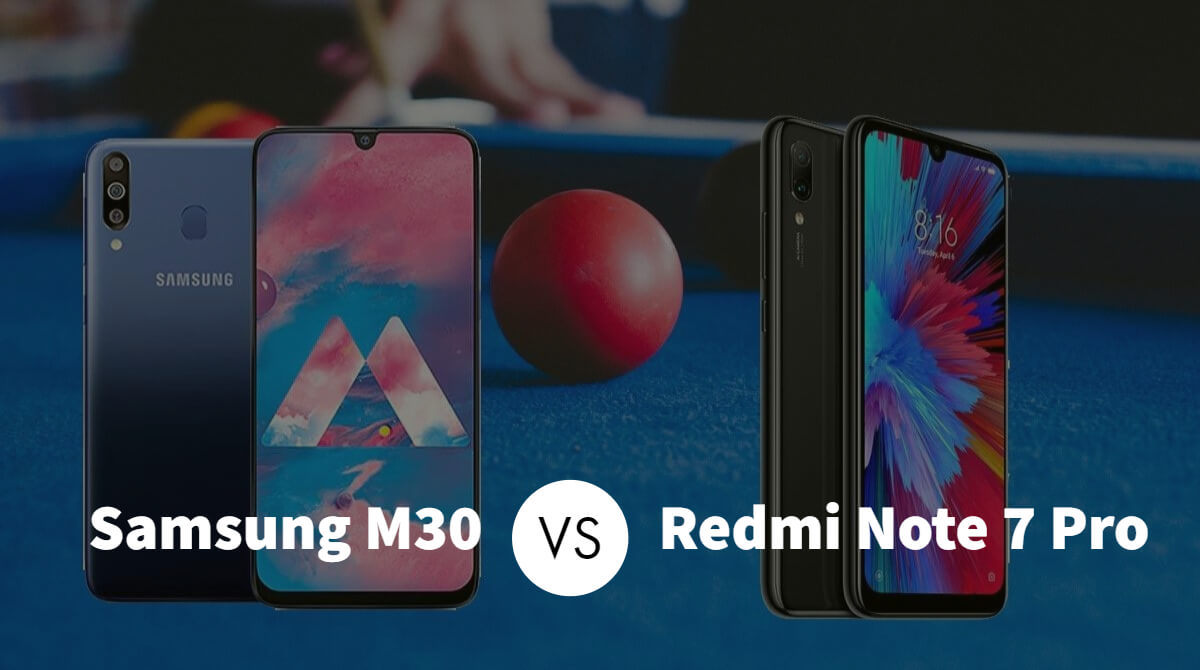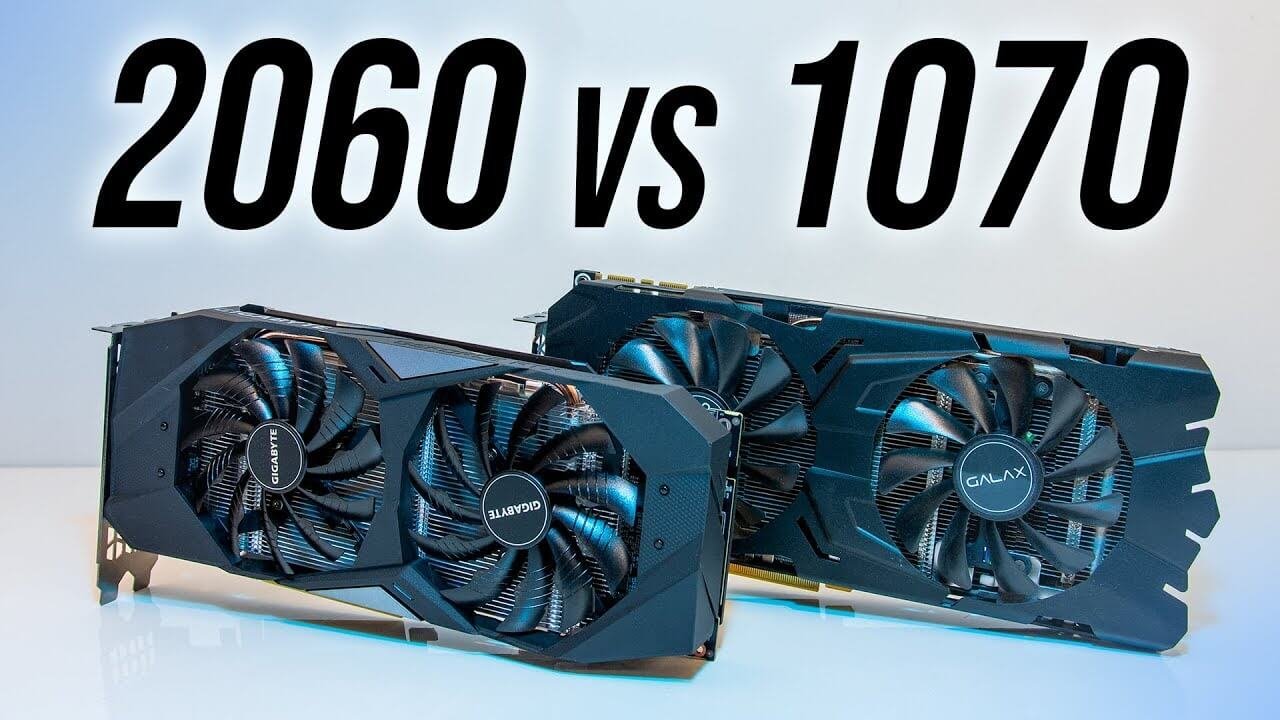Today, in this article I will be comparing Samsung M30 vs Redmi Note 7 Pro. I will tell you about the differences and help you to choose the mobile.
Design |
Samsung M30:
In design, the M30 is the same as M20 but with an extra camera at the back and a little larger screen. On the front, the selfie camera is in notch shape. Instead of the drop-shape or Infinity-V, as Samsung calls, we have a kind of “U” shape.
The Galaxy M30 is made of plastic. It isn’t very glossy and even seems a little lumpy if you look too close. But Samsung did try to spice things up with this two-tone gradient paint job and with the slight curves, the back design doesn’t look half bad. For a phone with such a large battery, the M30 is not too thick and the other benefit is that the camera is flush with the back.
Redmi Note 7 Pro:
There’s the bland metal design and you get the glass front and the glass back that looks and feels amazing. The back here features Gorilla Glass 5 like the front and that means it’s not prone to scratches.
On the front, there is the teardrop notch that gives the phone a really modern look. There’s still the chin here but I’m not complaining since this is a budget smartphone.
I like the perfectly placed tactile buttons on the note 7 pro. And the fact that it has everything including the headphone jack, IR blaster, and the USBC port which is still a rarity in this pricing.
The redmi note 7 pro packs in everything in a premium-looking design for a budget phone that’s almost perfect.

Display |
Samsung M30:
The M30 main attraction is on the front, a brilliant 6.4 inch Super AMOLED screen with a tall aspect ratio and a 1080p resolution. There’s a small U shaped notch cut out but the bezels are quite slim.
This is the only Super AMOLED in the galaxy M lineup. Everything looks quite sharp at 403 PPI and brightness is great too. We measured 437 nits maximum with a manual slider and 641 nits in auto mode in bright conditions.
There is a selection of several color modes to choose from and all of them are quite color accurate.
You don’t have a notification LED on the M30 but there is an option for an always-on display. If you want to check your phone at a glance.
Redmi Note 7 Pro:
The redmi note phones have always had good displays and the redmi note 7 pro is no exception. The 6.4 inch LCD display is just as good as it gets in this price range. It’s vibrant and even it’s not the brightest. It gets a job done outdoors so no problems on the display from.
The front also has the notification LED on the bottom chain which is a nice surprise, I mean most phones with the teardrop notch tend to skip this feature.

Audio |
Samsung M30:
The M30 has a single loudspeaker next to the USBC port. Loudness isn’t impressive, scoring just average in our tests but the sound quality is decent with no distortion of full volume.
There is a 3.5-millimeter jack and loudness is good with headphones plugged in. There is some measurable Distortion through and stereo separation isn’t the best.
Redmi Note 7 Pro:
The redmi note has a single bottom-firing loudspeaker next to the USB C port. It’s actually impressive, it’s quite loud and sounds clean at high volumes.

Storage |
Samsung M30:
There is plenty of storage available for your media. The M30 comes with 64GB or 128GB of storage built-in and the SIM tray has a dedicated micro SD slot on top of his 2 nano Sims.
Redmi Note 7 Pro:
It comes in two configurations 64Gb storage and 128GB storage. The internal storage of the smartphone can further be expanded up to 256GB via a micro SD card but doing so would mean sacrificing the dual SIM functionality.

Security |
Samsung M30:
To wake up and unlock the M30, you have a rear-mounted fingerprint scanner that sits flush to the body of the phone. The placement is a bit higher than I’d like and I found this scanner to be pretty unreliable especially compared to some mid-range competitors. You do have the option to use face unlock which is faster but not as secure.
Redmi Note 7 Pro:
The Rear-mounted fingerprint sensor impressed us with its speed and accuracy. The face unlock feature is also quick however it struggles a bit in dim surroundings.

Software |
Samsung M30:
The interface is Samsung’s one UI and the M30 has actually just received the update to Android 9. You have pretty much the same smooth software experience you’d get on any of Samsung’s recent phones including the flagships. There is no Bigsby virtual assistant.
Redmi Note 7 Pro:
MIUI is not something I hate, I like the fact that its feature pack, I mean I’ve always maintained and MIUI navigation gestures are one of the best implementations of gestures.

Hardware |
Samsung M30:
Under the hood is the Samsung Exynos 7904 chipset, the same is in the galaxy M20 and the A30. Processing power is adequate for everyday tasks but the GPU lags behind the competition, don’t expect to have a great gaming experience with this phone.
Redmi Note 7 Pro:
The note 7 pro packs in the new Snapdragon 675 processor which is a processor used by the Vivo V15 pro. Day-to-day tasks are a breeze, no issues. Yes, there is the occasional stutter when you have a lot of apps open in the background but I would say it’s a huge problem because I only faced this when I had PUBG or Asphalt 9 in the background.
The phone handles heavy-duty games with a lot of ease. Pubg mobile runs on high graphic settings but default which is not something you see in a budget smartphone.

Battery |
Samsung M30:
Battery life is quite impressive. With a large 5000 million power battery, the M30 earned a stellar endurance rating of 119 hours in our proprietary tests. Charging the phone isn’t super fast with the included 15-watt charger. Charging to full, it only took two and a half hours.
Redmi Note 7 Pro:
The redmi note 7 pro has the usual 4000 mAh battery. In my usual usage the phone lasted me well over a day I would start the day at 100% and by the end of the day, the phone would be around 30% or 35% in medium to heavy usage.
When it comes to charging the redmi note 7 pro comes with 10-watt charger which I think is a letdown. The 10-watt charger takes 2 hours and 20 minutes to charge the Note 7 Pro from 10 to 100 percent.

Camera |
Samsung M30:
The galaxy M30 has a triple camera setup on the back.There’s a 13 MP (f/1.9, PDAF) + 5 MP (f/2.2 Ultra Wide) + 5 MP depth sensor.
During the day the Galaxy M30 takes decent photos. It does an adequate job handling noise and there’s good capture detail. Dynamic range is good if you leave the Auto-HDR, which we recommend you do. Otherwise, you may see some blown highlights.
The ultra-wide camera has noticeably warmer and slightly more saturated colors in the main camera. Photos have heavy distortion with no option for correction.
The depth sensor does some good work and live focus mode. Your portraits look very nice with decent subject separation.
The low light performance won’t win it any awards though. Your clicked images have low saturation and highlights are blown out. Low-light shots from the ultra-wide camera or even less appealing. They’re generally soft and blotchy.
For selfies, the galaxy M30 has a 16-megapixel front-facing cam. Images are surprisingly good. There are excellent detail and sharpness.
Videos from the M30 are rather limited. You can only record up to 1080p at 30fps and no third-party app can change that. There’s no stabilization either. Quality through the main camera is quite good though with plenty of fine detail.
The ultra-wide cameras footage isn’t quite up to the same standard as dynamic range is more limited.
Redmi Note 7 Pro:
This camera is a true 48-megapixel sensor. I am talking about the Sony IMX586, that’s featured in higher-end in phones like the Mi 9 or the Honor 20.
The note 7 pro captures photos that are bright, detailed, and have great dynamic range. I don’t like the fact that some photos come out a bit over-sharpened but overall I like the photos that this full captures.
The portrait mode is decent too but most of the time I found the edge detection to be finicky.
The redmi note 7 pro camera is pretty good in the low-light too which is where most budget smartphones tend to struggle. I like the fact that the note 7 pro cameras focus on taking a good photo in low-light rather than just amping up the brightness like most budget phones do. Yes, sometimes our note 7 pro’s cameras mess up but mostly the performance is above average.
There is also the night mode here. Images are fairly subtle. There’s not a huge difference in low light and in night mode. However, the photos are slightly more detailed and brighter. Yeah, it’s a good feature to have especially on a budget smart.
For selfies, note 7 pro features a 13-megapixel camera and it’s decent. I mean in good lighting the selfies are pretty good with good details but move to low light and you get selfies that look soft and not so impressive.

Which one you should buy? |
These two phones are pretty much the best. These companies have to offer in this price segment they are miles apart. The Xiaomi Redmi Note 7 Pro is a lot more powerful, offers better cameras, up-to-date software, and it’s priced lower in comparison. What Samsung has going for is the AMOLED panel and good battery life. If you are looking to buy between these two smartphones The Redmi Note 7 Pro is the one to pick.



